Quickly Create An Effective Data Collection Form
Quality data is the cornerstone of informed decision-making. Whether you're a business owner, a researcher, or a data enthusiast, the way you gather information will significantly impact the success of your projects.
The best way to ensure the quality and reliability of your data is to collect them via carefully crafted data collection forms.
So let’s see how to do just that.
What is a data collection form?
In the simplest terms, a data collection form is a tool used for gathering and recording information in a standardized manner. This standardization is crucial for ensuring that the data collected is useful, accurate, and easy to analyze.
Whether it's used in market research, patient intake in healthcare settings, customer feedback surveys, equipment inspection processes, or employee data collection, the goal remains the same: to gather information in an organized and coherent way.
Data collection forms can come in both paper and digital form, with the latter having ginormous advantages.
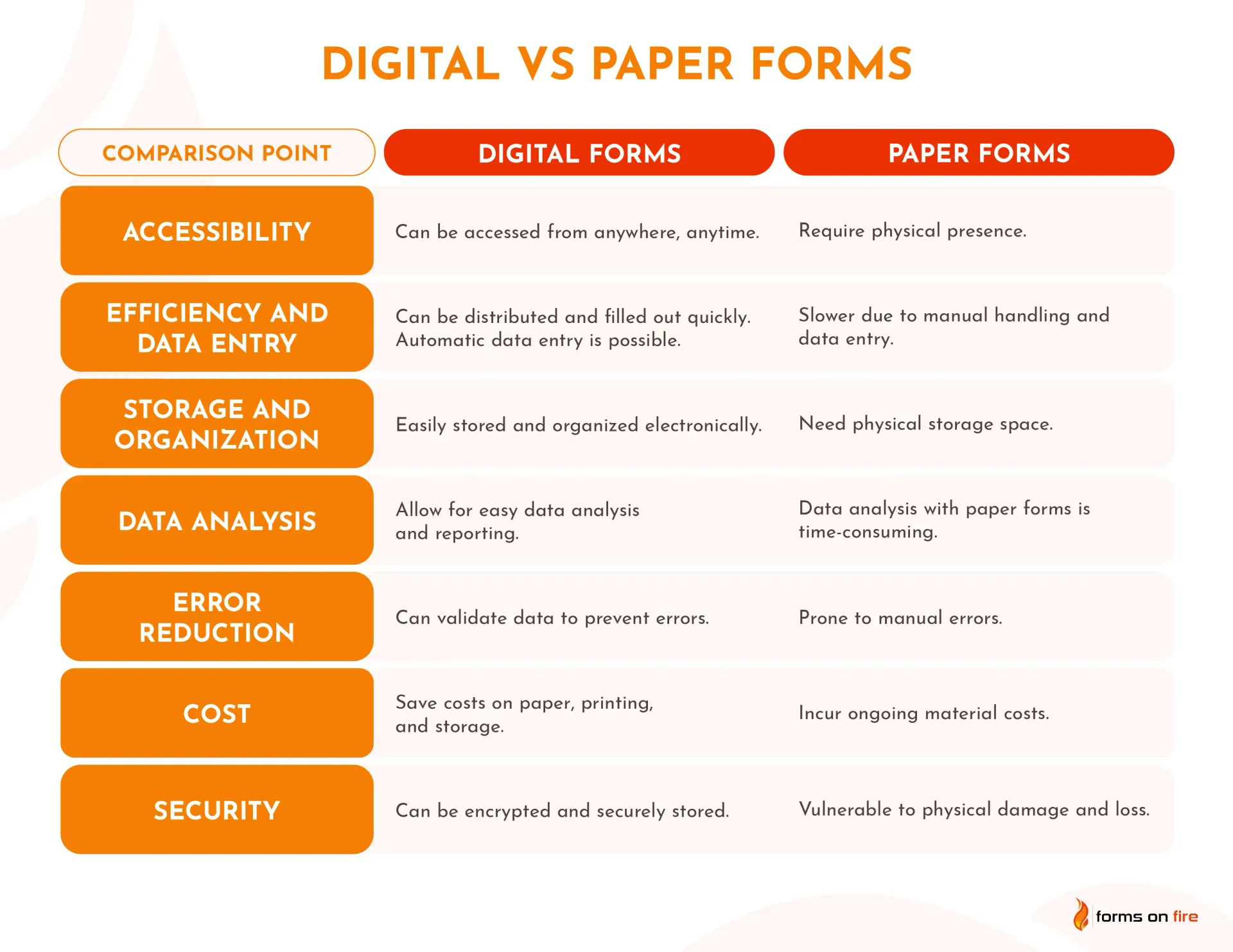
Naturally, data collection forms come in various types, shapes, and sizes.
From simple questionnaires to complex forms with conditional logic, each type of form should be designed with its specific use case in mind, ensuring that the right data is captured in the right way.
What is the quickest way to create a data collection form?
The quickest way to create a data collection form is to use a capable online form builder. We obviously think Forms On Fire is the best tool for the job, but there are other solutions out there that can do it (almost) as well.
Here is a rough outline of the process if you go down this route:
- Define your objectives: Start by clarifying your end goal. What is the purpose of collecting this data, and how will it be used?
- Begin with a template: Start a free trial of Forms On Fire and use a pre-designed data collection form template as your foundation. Add your branding and customize it to fit your specific needs.
- Craft your questions: Carefully compose your questions. Aim for clarity and brevity to ensure respondents understand and can easily answer. Utilize appropriate question types available to capture the most accurate and useful responses.
- Publish and share: Once your form is ready, publish it with a simple click. You’ll receive a direct link to share your form across various platforms or embed it on your site.
One of the biggest advantages of using online form builders is their simplicity. Users can create forms quickly by simply dragging elements (like text boxes, radio buttons, checkboxes) into their desired position on the form. This way, you can create complex forms without writing a single line of code.
Moreover, many of these tools offer additional functionalities such as the ability to integrate with other software (like CRM systems, email marketing services, and databases), the capacity to analyze and export data, and features to ensure the security and privacy of the data collected.
In other words, they provide everything you need to efficiently collect data in the field.
Five rules for making effective data collection forms
A well-designed data collection form is clear, concise, consistent, and user-friendly. It captures the necessary data efficiently, without overburdening or confusing the respondent.
In the upcoming sections, we’ll explore key rules that encapsulate these principles, guiding you to design practical and effective forms.
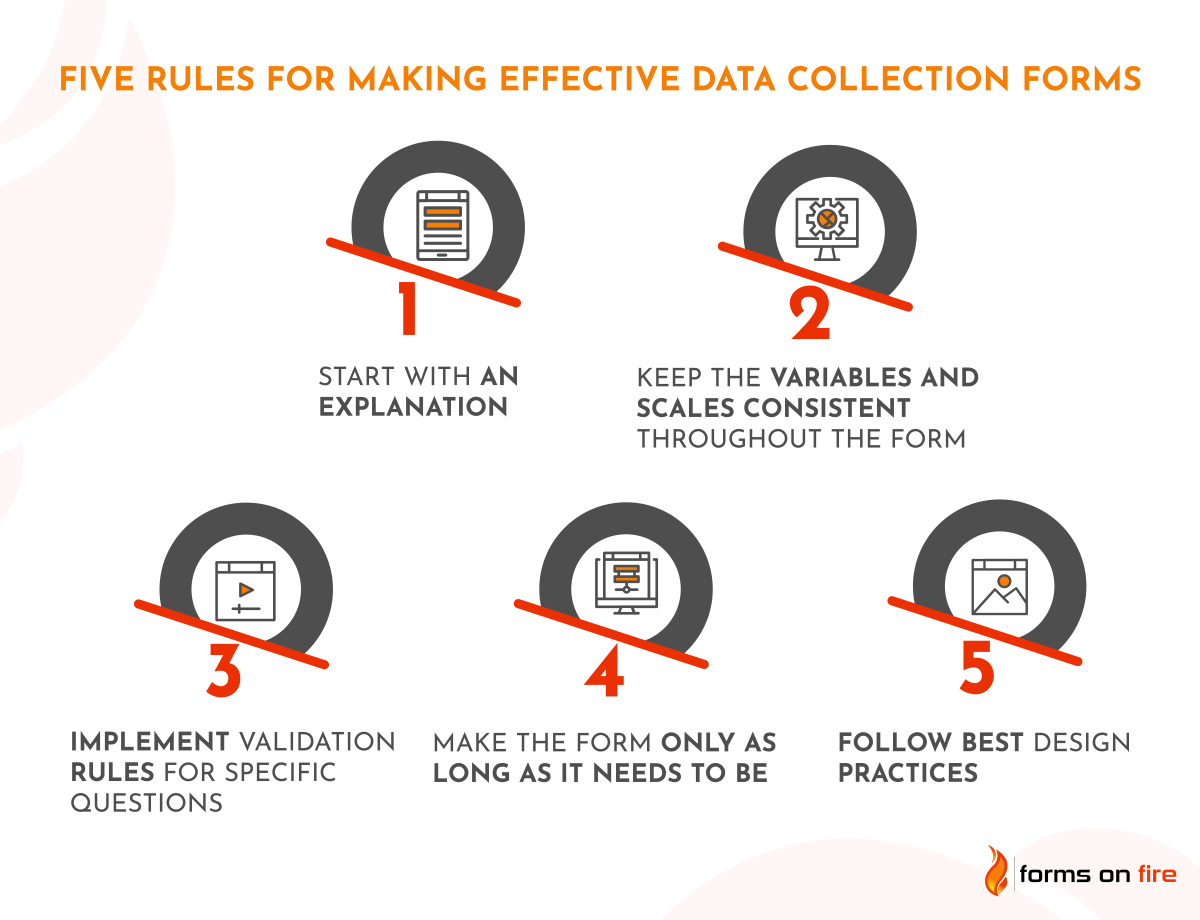
1. Start with an explanation
Having a quick introduction serves multiple purposes: it informs the respondent about the purpose of the form, the importance of their input, and how the collected data will be used. This transparency not only builds trust but also increases the likelihood of getting high-quality responses.
Here are key elements to consider including in the intro of your data collection form:
- Purpose of the form: Clearly state why you are collecting this data. Whether it’s for market research, feedback, or academic study, an upfront declaration of intent sets the right context for respondents.
- Estimated completion time: Informing participants about how long the form is likely to take respects their time and reduces the chance of incomplete submissions.
- Data usage and privacy: Address how you plan to use the data and ensure respondents that their information will be handled with confidentiality and privacy.
- Instructions for completion: Briefly guide the respondents on how to fill out the form. This includes any specific instructions about question formats or mandatory fields.
2. Make the form only as long as it needs to be
Statistics consistently show that form length is one of, if not the top reason, why people don’t complete online forms.
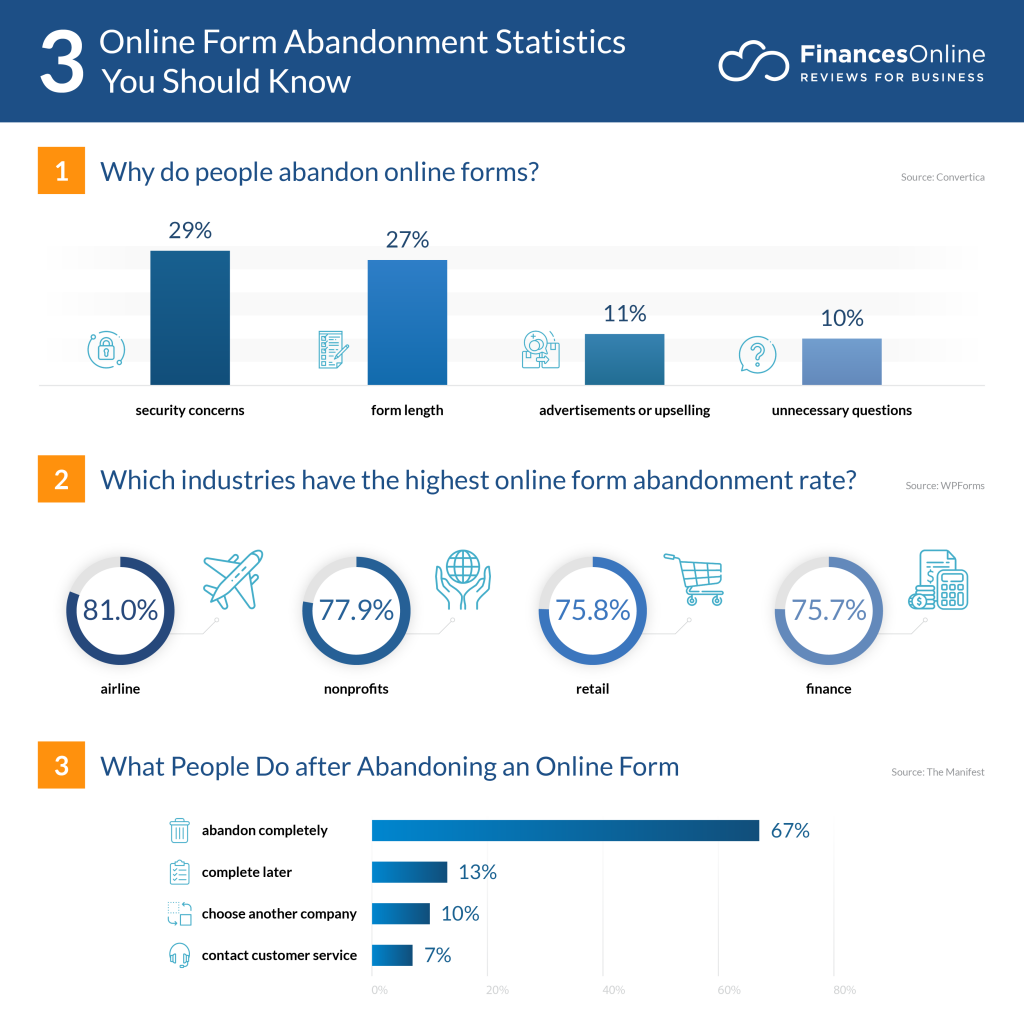
This is why a form should be long enough to gather all necessary information, but not so lengthy that it becomes a burden to complete. Here's how to achieve this balance:
- Prioritize questions: Focus on essential questions; avoid the temptation to gather unnecessary data just because it might be interesting.
- Limit open-ended questions: While valuable, open-ended questions are time-consuming. Use them sparingly.
- Use logical and sequential structure: Arrange questions in a logical order, moving from general to specific areas or following a natural progression.
- Use skip logic: Implement skip logic to streamline the experience for respondents. This feature allows them to skip irrelevant sections based on their previous answers, saving time.
- Group related questions: This will make the form seem shorter and more coherent.
- Provide progress indicators: If the form is on the longer side, include a progress bar or indicators. This helps respondents know how much they have completed and how much is left, reducing form abandonment.
- Test and iterate: Pilot your form with a small group before full deployment. This can reveal if certain sections are too long or confusing, allowing you to make necessary adjustments.
3. Keep the variables and scales consistent throughout the form
Keeping the variables and scales consistent throughout the form eliminates potential confusion and ensures that the collected data is coherent and easy to analyze.
Here are a few recommendations:
- Standardize answer formats: If you’re using scales (like Likert scales for satisfaction), keep them consistent throughout the form. Don’t use a 1–5 scale in the beginning and then suddenly switch to a 1–8 scale.
- Use consistent measurement units: Stick to one set of units (e.g., seconds vs. minutes, feet vs. meters) throughout the form to avoid confusion and ensure data comparability.
- Uniform language and terminology: Use the same terminology and language style throughout the form.
- Maintain consistent question structure: Try to keep a uniform structure in your questions. If you start with multiple-choice questions, avoid abruptly switching to essay-type questions unless necessary.
4. Implement validation rules for specific questions
Validation rules prevent common errors and ensure that the data gathered is accurate, complete, and usable.
Here are some tips on how to effectively implement validation rules:
- Mandatory fields: Clearly mark fields that are essential for the form’s purpose. This ensures that you don’t receive incomplete submissions.
- Input format validation: If specific formats are required (like dates in MM/DD/YYYY format or phone numbers in a particular layout), set up the form to accept only those formats.
- Range checks for numerical inputs: For numerical questions, define acceptable ranges (e.g., age should be between 1 and 100). This prevents unrealistic or erroneous inputs.
- Email and URL verification: Use validation for email addresses and URLs to ensure they are in the correct format. This is crucial for follow-up communications or data verification.
- Conditional validation: For questions that depend on previous answers, use conditional validation. For example, if a respondent indicates they have a pet, subsequent questions about the pet should become mandatory.
- Error messages: Provide clear, helpful error messages. Instead of just "Invalid input," specify what went wrong and how to fix it (e.g., "Date format should be MM/DD/YYYY").
Having proper validation rules significantly reduces the need for post-collection data cleaning. The best part? Online form builders can automatically implement most of the rules listed above.
5. Follow best design practices
Adhering to best design practices not only makes the form aesthetically pleasing but also intuitive and easy to navigate. Here are some key design principles to consider:
- Clear and readable font: Use a font that is easy to read. Ensure good readability by avoiding overly stylized fonts, maintaining a comfortable font size, and utilizing colors with high contrast between text and background.
- Minimalistic design: Avoid clutter. Use white space effectively to create a layout that doesn’t overwhelm or distract the respondents.
- Responsive design: With many users accessing forms on smartphones, a responsive design is critical.
- Consistent aesthetic: Maintain a consistent color scheme and style throughout the form. This conveys professionalism and improves the overall user experience.
- Intuitive navigation: Design the form so that it’s easy to navigate. This includes clear directions, an evident submit button, and the ability to review or change answers.
- Sufficient space for the answer: Provide enough room for responses, especially for open-ended questions, so respondents can answer comfortably without space constraints.
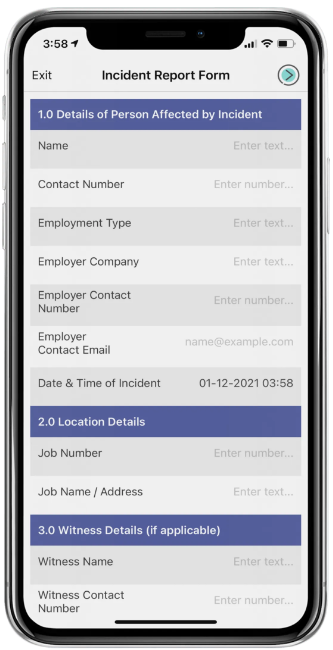
Again, online form builders are aware of these principles, which are already integrated into the software — so you can focus on asking the right questions.
Create digital forms in minutes with Forms On Fire
Forms On Fire offers a robust, no-code platform that streamlines the way you create, share, and manage data collection forms. Whether you are a business professional or a researcher, our platform is ready to help you get more and better data with less effort.
With an intuitive design interface, hundreds of data collection form templates, detailed customization options, over 3000 integrations, and SOC type 2 security, Forms On Fire has everything you need to turn raw data into actionable insights.
Request a demo or start a free trial and transform the way you collect and manage your data.


